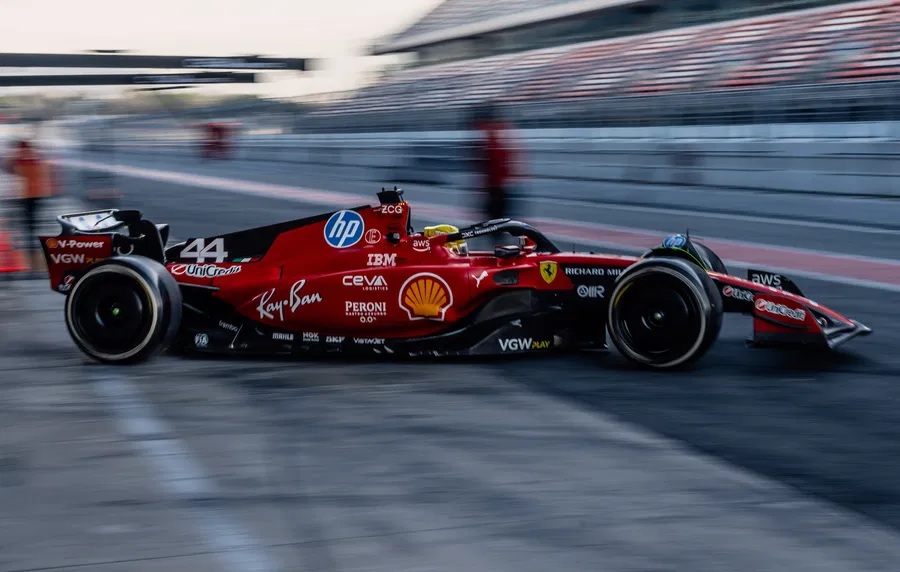Ferrari's 2025 plan: Focus on SF-25, with 2026 resource ramp-up

Today at 04:12 AM
With the 2026 Formula 1 regulatory overhaul officially on the horizon, Ferrari finds itself navigating a complex balancing act: optimizing the performance of its 2025 SF-25 contender while laying the groundwork for its next-generation "Project 678" car.
The Scuderia's ability to manage its resources under the constraints of F1's Aerodynamic Testing Regulations (ATR) will play a critical role in its competitiveness both in the near term and in 2026.
Ferrari technical director Loic Serra has implemented a strategic plan to navigate this dual challenge, leveraging its allotted wind tunnel time effectively.
The introduction of the 2026 regulations presents a unique opportunity for all teams, allowing them to essentially "reset" their designs.
However, this opportunity comes with the pressure of developing two competitive cars concurrently.
Aerodynamic Testing Restrictions (ATR): The Strategic Decider
Ferrari's approach to this balancing act is shaped by the sport's ATR regulations, which allocate wind tunnel hours and runs based on the previous season's Constructors' Championship standings.
By finishing second in 2024, Ferrari begins 2025 with 900 wind tunnel hours for the first half of the year – 60 more than reigning champions McLaren but 60 fewer than Red Bull.
However, these sliding-scale allocations will be updated mid-season after the Canadian Grand Prix in June, with adjustments reflecting current standings.
These ATR constraints underscore the importance of early-season efficiency. Ferrari's engineering department therefore faces the dual challenge of maximizing short-term development for the SF-25 while ensuring sufficient resources are reserved for the transformative 2026 car.
Prioritizing the SF-25
Under Serra's guidance, Ferrari has decided to focus the majority of its wind tunnel sessions and development efforts on the SF-25 for at least the first four months of 2025, according to a report from Autoracer.it.
This approach is deemed essential given the SF-25's significant departure from its predecessor, the SF-24, which leaves Ferrari's engineers with limited data for comparison.
Additionally, Ferrari must adapt to a new FIA technical directive set to take effect by the Spanish Grand Prix, when the FIA's clampdown on flexible wings comes into full force, which will inevitably consume wind tunnel hours.
Of the 900 wind tunnel hours available to Ferrari in the first half of the year, approximately two-thirds will be allocated to the SF-25.
This includes 180 hours dedicated to high-speed runs on the updated wind tunnel carpet installed at Maranello last summer.
While this emphasis on the present is crucial to remain competitive in 2025, it leaves only a third of the available time for the 2026 car in the early stages.
Project 678: Ferrari's Vision for 2026
Despite its near-term focus, Ferrari has not overlooked the importance of the 2026 regulations.
Serra, who officially joined Ferrari on October 1, 2024, has already begun building a dedicated team of engineers and resources to work exclusively on Project 678.
This car will be Ferrari's response to the sweeping 2026 changes, and its development will ramp up as the year progresses.
Ferrari technical director chassi, Loic Serra.
By mid-2025, as more wind tunnel hours become available due to the reduced focus on the SF-25, Ferrari's attention will gradually shift toward the next-generation car.
This progressive reallocation reflects a long-term strategy to ensure Ferrari remains a frontrunner in 2026, even if it means making sacrifices during the current season.
The Broader Context
Ferrari's balancing act is emblematic of the challenges all Formula 1 teams face in this transitional period.
Teams must carefully weigh the benefits of immediate success against the promise of future dominance under the new regulations.
With McLaren, Red Bull, and other rivals making similar strategic calculations, Ferrari's decisions could ultimately determine its standing as the sport enters a new era.
For the Italian outfit, this journey is as much about strategy as it is about engineering.
By navigating the constraints of ATR, adapting to FIA directives, and aligning resources with long-term goals, the Scuderia is laying the foundation for what it hopes will be a championship-caliber 2026 season – without losing sight of its competitive ambitions for 2025.
As the year unfolds, the focus will inevitably shift toward Project 678.
Keep up to date with all the F1 news via X and Facebook
The post Ferrari's 2025 plan: Focus on SF-25, with 2026 resource ramp-up appeared first on F1i.com.


